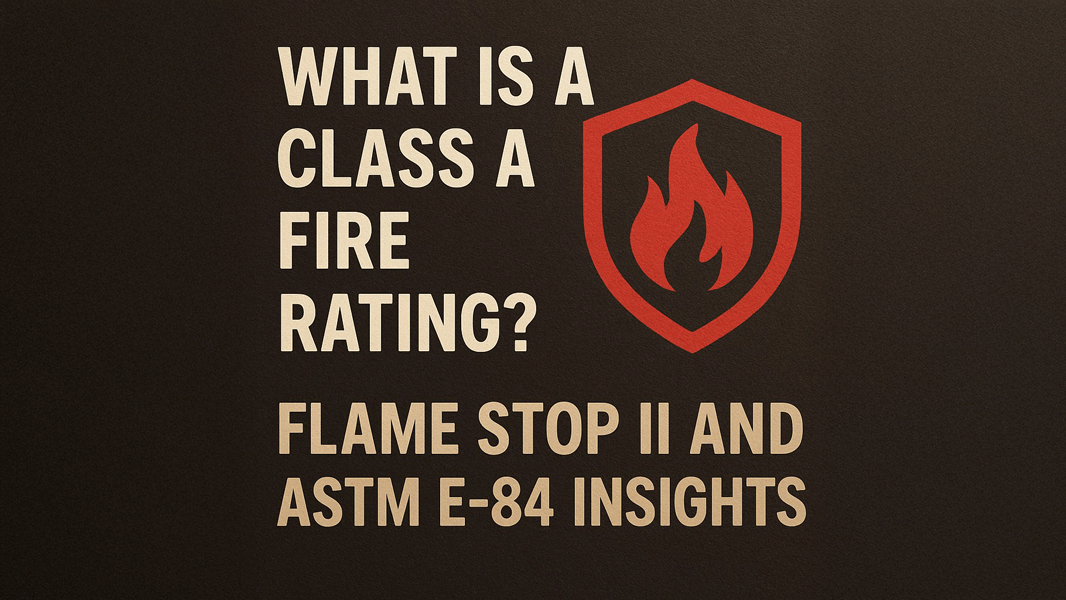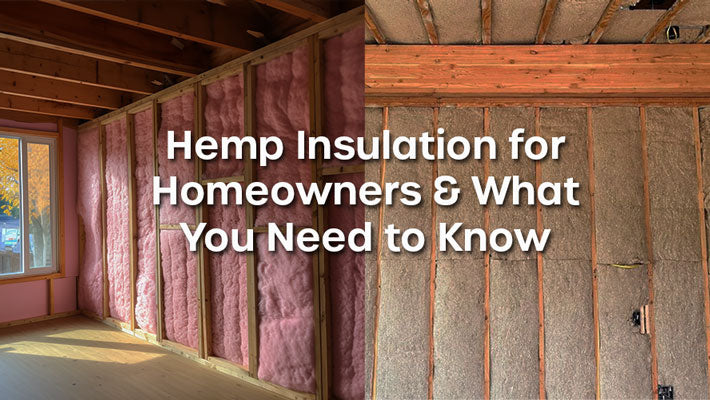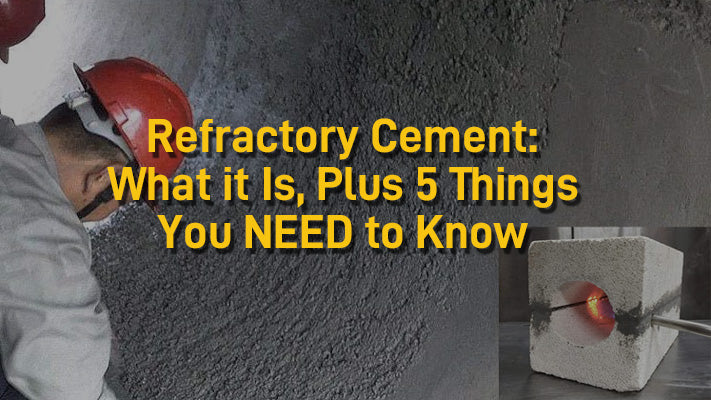Jake Goodwin - Dec 03, 2021
How Do Insulated Concrete Forms Work?

ICF blocks installed on a residential home
Commonly used in residential and commercial construction, insulated concrete forms (ICF) are permanent polystyrene blocks that are filled with concrete to create extremely durable and thermally efficient walls. Insulated concrete forms are what keep a home stable, durable, and warm, but what are they and how do they work, exactly?
Insulated concrete forms (ICFs) are hollow interlocking Styrofoam blocks engineered for low-rise residential and commercial construction. ICFs form strong, thermally efficient concrete walls resistant to mold, pests, and withstand heavy storms and natural disasters.
These polystyrene block forms provide a more environmentally sustainable alternative to traditional wood framed buildings enabling greater energy efficiency. Read on to understand how insulated concrete forms work and why you should consider them for your next construction project.
What Are Insulated Concrete Forms Made Of?
Insulated concrete forms are long polystyrene blocks or panels that have a hollow core. These are Styrofoam building blocks that somewhat resemble hollowed out upside down Lego pieces. Each foam form is secured side by side and top to bottom by internal clips. The entirety of the joined forms hold the concrete in place during curing.
ICFs can be made of many different materials.
There are five types of ICFs:
1. Polystyrene foam blocks
2. Polyurethane foam
3. Cellular concrete
4. Cement bonded wood fiber
5. beaded polystyrene cement bonded

What Do Insulated Concrete Forms Do?
ICFs serve as mold for concrete walls enabling quick construction. Concrete is pumped in from the top to form the wall structure. The polystyrene walls remain and act as an additional barrier system, hence great warmth and soundproofing.
Because these frames are lightweight, builders save a lot of time and labor costs at the beginning of the construction. One advantage of using ICF is how quickly they can be stacked together and made ready to fill. Erecting these blocks is much quicker than traditional wood or metal framing and reduces the total project time. Concrete then gets poured into the hollow core to complete the insulated concrete forms construction.
After completing the curing process, the cladding is fixed. Cladding is a process where one material (can be wood, plaster, tile, etc.) is placed over another to create a skin or later. In construction, cladding is essential for building thermal insulation, weather resistance, and a better appearance.
Insulated concrete forms are used to building standard walls, posts, and beams.The insulated concrete forms' thickness will determine the insulation R-values. Typical insulation values range from R-17 to R-26. As for most wood-framed walls, they have insulation values that range from R-13 and R-19. Again, insulated concrete forms are durable against wind and seismic prone regions.
R-20 is the average R-Value of ICF, surpassing standard
R13-19 wood-framed walls
Are Insulated Concrete Forms Expensive?
ICFs are a cost effective construction solution and pay off long term from their energy efficiency and structure longevity.
Insulated concrete forms are not only popular among home builders, but they are also quite popular among commercial developers. This rise in ICF popularity comes as the material costs of lumber rise and there is greater demand for more energy efficient buildings. The energy savings achieved in the long run can far exceed the increased short term construction cost.
Everybody wants a sustainable, durable, and warm home and Insulated concrete forms provide all of this.
Two reasons why insulated concrete forms are worth the money:
- Insulated concrete forms seal very well. Therefore, you do not have to worry about air leakage through the walls. In winter, warmth is vital to your health and comfort.
- You get two continuous insulation layers, one inside and another outside, without thermal bridges, which reduces heat loss.
That said, ICFs are worth the investment at typically only 5% more expensive than standard wood-frame forms. People living in tight building envelopes will realize savings as their monthly energy bills will be much lower than if they were to have a wood-frame home.
Another huge return is the longevity of concrete built homes, having a long lifespan, over 100 years. There isn't much maintenance needed structurally because the foam does not degrade over time. And as mentioned earlier, insulated concrete forms are resistant to weather or natural disasters.
If you want a long-lasting, strong, durable, and warm home, insulated concrete forms can be an excellent investment.
Benefits of Using Insulated Concrete Forms
There are many reasons insulated concrete forms are excellent for construction, whether for commercial or residential buildings. From saving energy to being kinder to our environment, insulated concrete forms are a great alternative to other construction foundations today. Even though insulated concrete forms' cost may seem high now, it will make more sense years down the road.
Insulated concrete forms are great for construction because they can accommodate buildings and walls higher than 40 feet tall. Insulated concrete forms have been engineered and constructed to 48 feet tall and designed like any other steel reinforced Concrete (RC) wall. Indeed, insulated concrete forms are revolutionizing the construction industry.
Low Rise Building Friendly

Low rise residential building built with ICF
Energy-Saving
In terms of energy use, insulated concrete forms use less energy to heat and cool the interiors than structures made of wood. Even if the temperature outside is extreme, your home will be well insulated all day. A good air and heat circulation will make your home more energy-efficient, thus saving you money on heating or cooling bills.
Reduce Infiltration
Compared to wood framing, insulated concrete forms can reduce infiltration by 50-60%, significant to the building's quality. Lower infiltration means better energy efficiency. Better efficiency will help you lower your energy costs.
Better Home Environment
With insulated concrete forms, a building becomes more resistant to mold and mildew, hence a healthier and cleaner environment. There is no need to worry about pests, too. And insulated concrete forms are suitable for any climate.
Resistant To Sound
Insulated concrete forms are twice more sound-resistant than wood-framed ones. Insulated concrete forms can reduce sound transmission 200% better than the concrete masonry unit (CMU) walls. The soundproof quality that insulated concrete forms offer can give you more privacy and prevent noise from disrupting a structure's interior.
Adding double glazed windows and roof insulation will also make a building even more soundproof.
Fire and Weather Resistance
Buildings using insulated concrete forms are more resistant to fire and bad weather than other types of properties. Insulated concrete forms use treated polystyrene that does not support combustion, making the building less likely to catch fire. Insulated concrete forms are a much better option than wood-frames.
Properties with insulated concrete forms will also stand up better to strong winds.
Considering all the benefits that insulated concrete forms can offer, it is safe to say that insulated concrete forms are great for modern buildings. Homeowners can benefit from using insulated concrete forms that will save them money on home repairs or heating bills in the long run. Insulated concrete forms have been proven to outperform many existing building codes by 50 to 60 percent.
Final Thoughts
Insulated concrete forms are high-quality, durable, and long-lasting building systems that use lightweight insulating materials to support concrete walls and are then left in place as insulation.
Even though insulated concrete forms are more expensive than conventional wood-framed building the insulated concrete forms are worth the investment as they pay off in building longevity and thermal insulated efficiency.
The value insulated concrete forms can offer comes in withstanding terrible weather, reducing annual heating loss/costs, soundproofing buildings, and resisting mold and mildew. All of these improve quality of living long-term.


